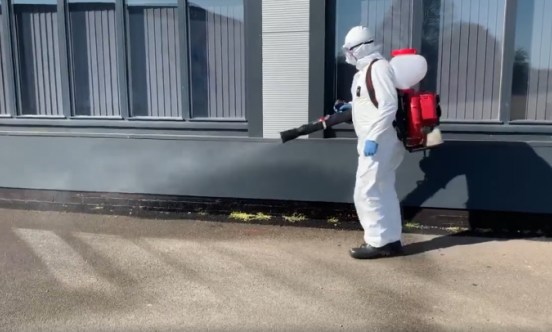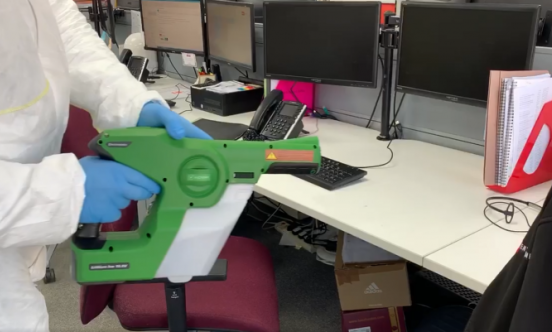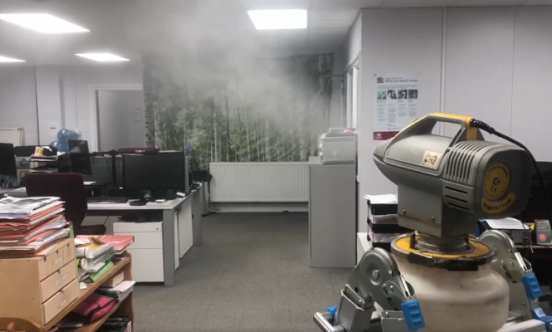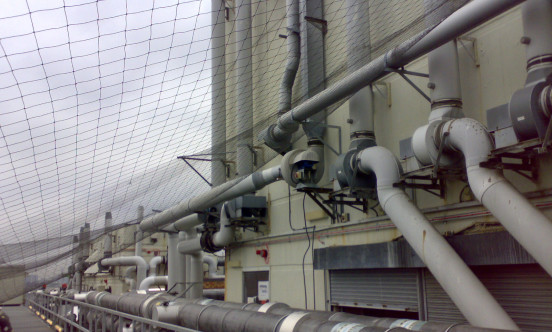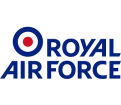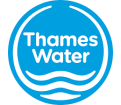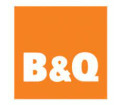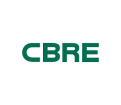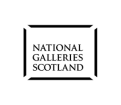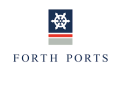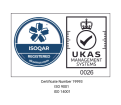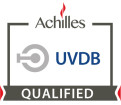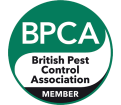
Call 0333 567 2020 for advice and quotes or contact us online
Problem pigeons for Urban Splash
Gallery
Using a 'Hidden Hawk' to manage problem pigeons for Urban Splash
The main challenge was to remove the problem pigeons without disturbing the peregrine. A falconry response programme – flying a hawk to scare the nuisance pigeons, would usually be used to deter the pigeons from the site; however this was not possible due to the presence of the peregrine falcons.
Project overview
Urban Splash, a building regeneration specialist, was having issues with feral pigeons at the Birmingham Fort Dunlop site. The site is home to a Travelodge, commercial offices and retail stores so the fouling from the pigeons was damaging the image of the tenants business as well as creating a slip hazard.
The problem was further exacerbated by the presence of peregrine falcons which had a nest with fledglings in. Peregrine falcons are a protected species (a schedule 1 protected bird) and are protected by the Wildlife and Countryside Act 1981 and any attempt to intentionally disturb the peregrine falcon and move (or remove) the eggs or nest is illegal.
Our solution
As the UK’s bird control experts we often work to protect wild peregrine falcons, working in close proximity, installing nest boxes or monitoring nests. To ensure the pigeons were removed and the peregrines were undisturbed, we:
- Created a 50m exclusion zone around the peregrine falcon nest
- Commenced an intensive bird control programme
- Used a harris hawk on a short creance (a form of leash) so was it was not flown
- Used the hawk travel box to help influence pigeon behaviour
- Ceased activity if the peregrine falcons started flying or the fledgling appeared distressed
On this project the harris hawk is not flown as it would be normally but the hawk is kept on a 5-6ft creance while the peregrines are in residence. The hawk is then walked in the pigeon occupied areas outside of the exclusion zone. Once the pigeons had seen the hawk and flown, the hawk was placed in its travel box. This approach was repeated regularly throughout the programme period, the result being that the pigeon population dramatically reduced from over 200 to fewer than 20.
Why did this work?
The programme influenced the pigeon’s behaviour as the hawk appeared and disappeared regularly. To the pigeons even when the hawk was not on view it was still in the area and as a natural threat that could appear at any time. Later on in the programme, when the peregrine falcons have fledged and left the area, the hawk will also be flown further maximising the pigeon’s natural instinct to move away from a potential predator.
What’s next?
Following the successful ‘hidden hawk’ programme, the pigeon mess has been cleaned from the gantries and the area sanitised so the unsightly image and a slippage hazard is removed and the area clean. Our expert bird control team have recommended a regular falconry programme to maintain a pigeon free zone and pigeon netting to exclude the pigeons from returning to high access areas.
The peregrines falcon fledglings have begun to fly and are being taught to hunt by their parents and we are happy to report their numbers in the UK are on the increase!
If you have a pigeon or gull control problem talk to your local NBC team for advice or to book a survey by calling 0333 567 2020.
Read our useful article 'How To Deter Pigeons' for advice on how to avoid pigeon problems.
